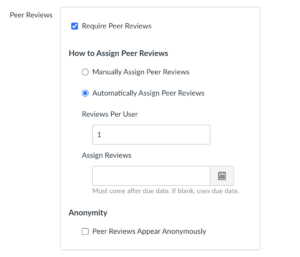See also Drafts, Edits, Revisions in the Working with Student Writing section of the Teaching Guide for GSIs.
Writing is revision – an aspect that is as important for the beginner as much as the seasoned writer. As we know as graduate students, when we write our semester papers, articles, and dissertations, the most important insights of a piece may only really shine through a second or even fifth revision. Attuning students to this continuous and constructive mode of revision can help them demystify the belief that writing is supposed to happen in a single sitting. It also steers them away from treating writing as an end-product and towards an idea of writing as an ongoing practice that is itself a form of thinking and working-through difficult ideas and conceptual problems. This attitude holds true particularly perhaps for academic writing, where our goal is often to articulate and clarify very complex ideas. As one science professor has said, “A first draft confronts you with the nature of your own confusion on the subject. Revision gives you a chance to recover from the confusion” (quoted in Gottschalk and Hjortshoj, 64).
The Idea of Revision
- To introduce this idea of continuous revision to students, it can be helpful to explain to students the difference between revision and proofreading. While proofreading eliminates surface errors, revision addresses structures of thought and presentation.
- You can connect this difference between revision and proofreading to your grading rubric. Revision tends to address global-level issues first (elements such as a thesis or overall argument; relationship among sections; overall coherence) and mid-level issues next (such as paragraph construction). Small-scale issues (word usage, sentence-level correctness, faulty parallels) tend to fall into the category of “proofreading.” You can then explain that a paper’s merit tends to be evaluated in these terms, with the most weight placed on global-level issues.
- You can also show examples of revision from student work or even your own. Distribute or present a page of a former student’s marked-up first draft along with the next draft, with substantive changes. (Be sure to ask permission from the student, preferably in writing, to use his or her work, and it’s best to present it to the class anonymously). Or, you might want to share copies of your own papers and your own revisions from when you were an undergraduate student. This is often an eye-opening moment for students, emphasizing that everyone, including their own instructor, goes through a revision and improvement process.
Peer Revision in a Workshop Setting
Holding peer review workshops throughout the semester can be a very valuable way for students to immerse themselves in the revision process.
- Types of workshops: Most R&C courses include peer review workshops for students’ first, full drafts. If you’d like, you can also incorporate workshops for other stages of the writing process: paper outlines, annotated bibliographies, and paper “pitches” or “proposals” where students sketch out their ideas and interests without necessarily forwarding a thesis statement yet. Students often find the latter kinds of workshops helpful in gleaning more ideas and directions for their papers, especially if it is a lengthy research paper.
- Have a clear set of guidelines for your particular workshop. It can be helpful to distribute a review worksheet which the reviewer will share with both the author and you.
- Here is one example. There are two pages to the worksheet. The first is for the reviewer to write an evaluation of his or her partner’s paper; the second is for the writer to sift through the reviewer’s comments and make a revision plan. For an explanation of how to conduct an anonymous peer review activity, see Group Work: Techniques in the Teaching Discussion Sections portion of the Teaching Guide for GSIs.
- It is also possible to assign peer review through bCourses. When you create the Assignment in bCourses, you will find a Peer Review section at the bottom of the page. Check the box “Require Peer Reviews” and decide whether you want to assign reviewers manually or automatically. You can also choose to have the assignments sent to reviewers anonymously.
More discussion of managing drafts, revisions, and proofreading appears in the Working with Student Writing section of the Teaching Guide for GSIs.
Reference
Available for use in the GSI Teaching & Resource Center, 301 Sproul Hall.
Gottschalk, Katherine and Keith Hjortshoj (2004). The Elements of Teaching Writing: A Resource for Instructors in All Disciplines. New York: Bedford/St. Martins. Available at the GSI Teaching & Resource Center.
